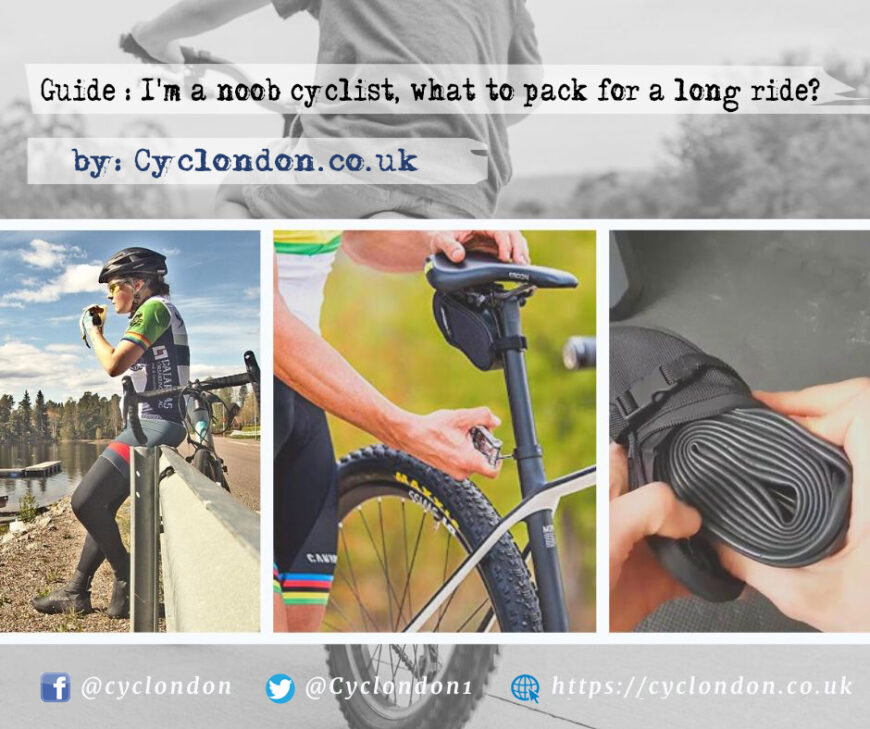
by Cyclist Yoni, rides Brompton, Gravel and MTB
One of Cyclondon's most pressing aims is to help newbie cyclists getting comfortable with cycling. Those of you who have just now taken on cycling, may have some questions concerning some longer than usual rides, the most common one would be "What to pack for a long ride". We are meant to be a blog by cyclists for cyclists, and rather than some super-duper gear review which isn't useful to 99% of us, we will try to help you tackle issues as mentioned above.
"What to pack for a long ride" can be a straightforward question for some, yet an overwhelming one for a newbie rider. I've asked the same question to some experienced riders and got different answers. In this short guide, I'll try to cover the bear necessities, and their derivatives, i.e. - when talking about water, I'll try to mention what are the best options out there.
Water
So... I already mentioned water. You'd think water is trivial, right? Well... you'd be surprised. Water is the first thing that runs out on a long ride. Some cyclists don't even have a water bottle cage installed! Especially in a country where the weather doesn't get too hot, it's important to pack water, as one may think that if it's cool - it's excessive. It's not! You're body loses a lot of water when performing physical activity, and you need to replenish its reserves or you risk harming yourselves.
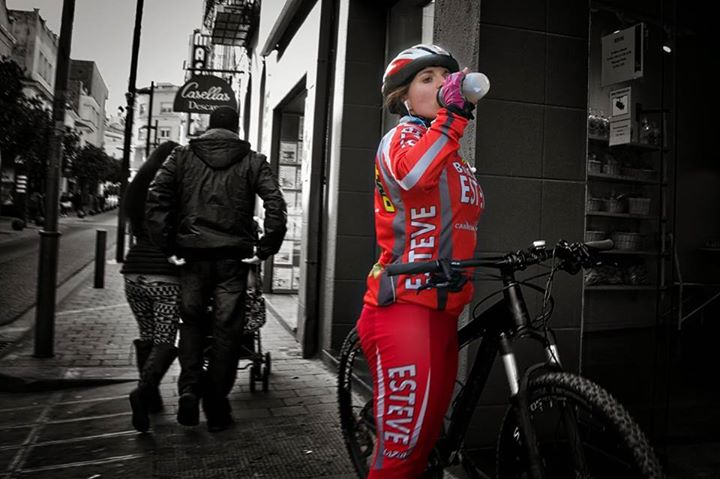
Whether you'd like an extra bottle holder, or a backpack hydration system, it's important to have more than the 500cc which one bottle holds. Alternatively, plan a root with a "pit stop": a local pub or even a grocery store, where you can "fill her up".
Suiting attire and gear
There are many attire/gear recommendations I can give here. Instead, i'll just advise to be prepared. for a long ride, pack whatever clothes that make you comfortable, but make sure to be prepared in terms of weather just as you're prepared in terms of your equipment. Don't go off road with road bike wheels, don't ever ride without a helmet, wear sunscreen 😉
💡 Weather - the UK weather changes a lot, a day's ride can start off in 'summer' and end up in 'winter'. Don't be ill prepared. i.e. Don't go cycling with a tank top, when you know you'll only return after dark. If you're riding in winter - use our cycling jackets review to prepare yourself.
Be prepared for a puncture
Punctures are a part of a cyclist's life, they're common and will creep up on you in the most annoying times. I.e. - on the morning commute, bang in the middle of the track, etc.
So what can you do about it? Well, the only way to almost completely prevent punctures is to go 'tubeless'. That is to buy special wheels that don't need an inner tube. However, this doesn't guarantee 100% prevention, the riding experience may not be the best for some. So what else is there to do? much like the boy-scouts - be prepared!
Learn how to change tube - Changing a tube is a skill one can easily learn. True, the first few attempts will take longer and your fingernails may break a bit, but after a few goes you'll be an expert.
Watch YouTube videos and make sure you know how to successfully detach and reassemble the rear wheel (yes, the one with all the gears) and how to insert the tube without damaging it.
Learn how to use a puncture kit - While it's advisable to use a spare tube in mid track, one can easily learn to patch up an inner tube. My dad used to test me, and till this day I'm always extra proud of myself when I've successfully found the source of the puncture using a bucket full of water.
It's pretty straightforward in 5 quick steps: [1] inflate the tube (after you've taken it out of the wheel, using the plastic lever carefully), [2] put it in a bucket full of water and find the air leek. [3] Dry the area, smooth it out with sandpaper and mark it with chalk.
[4] Apply glue generously around the marked area and let it dry a bit, [5] then apply the patch making sure it isn't loose at any end. Finally, re-inflate the tube and if it doesn't deflate overtime - you're ready to reuse it. [6] Deflate mostly and refit inside the wheel without damaging the tube.
Quick fix kits - Kits which will seal and inflate your tyre at the same time. There's one by Zefal, and another by Muc-Off. Whether these actually work, well that depends on how small is your puncture. Quite frankly, the better option would be to carry with you a spare tube.
Use slime - Slime, Squirt, Joe's and other brands offer sealants which you preemptively fill your tubes with. This stuff will constantly rumble in your tube, seeking and repairing punctures up to 3mm. Do they work? sometime yes, my experience while MTB'ing has been so far positive, however I also saw a tube burst with a splash of the gooey stuff (not nice).
It's always advisable to keep one handy, even filling the tubes after you've got the puncture may help reduce air escape and let you carry on track until you can repair/replace the tube from the comfort of your home.
There are versions of slime made for tubeless tyres (while they are against punctures, they won't hold off against slashes/big holes in the tyre). These are reportedly working with holes up to 6mm, the most prominent of these from Muc-Off.
Oh, and yes, A PUMP is extremely handy!
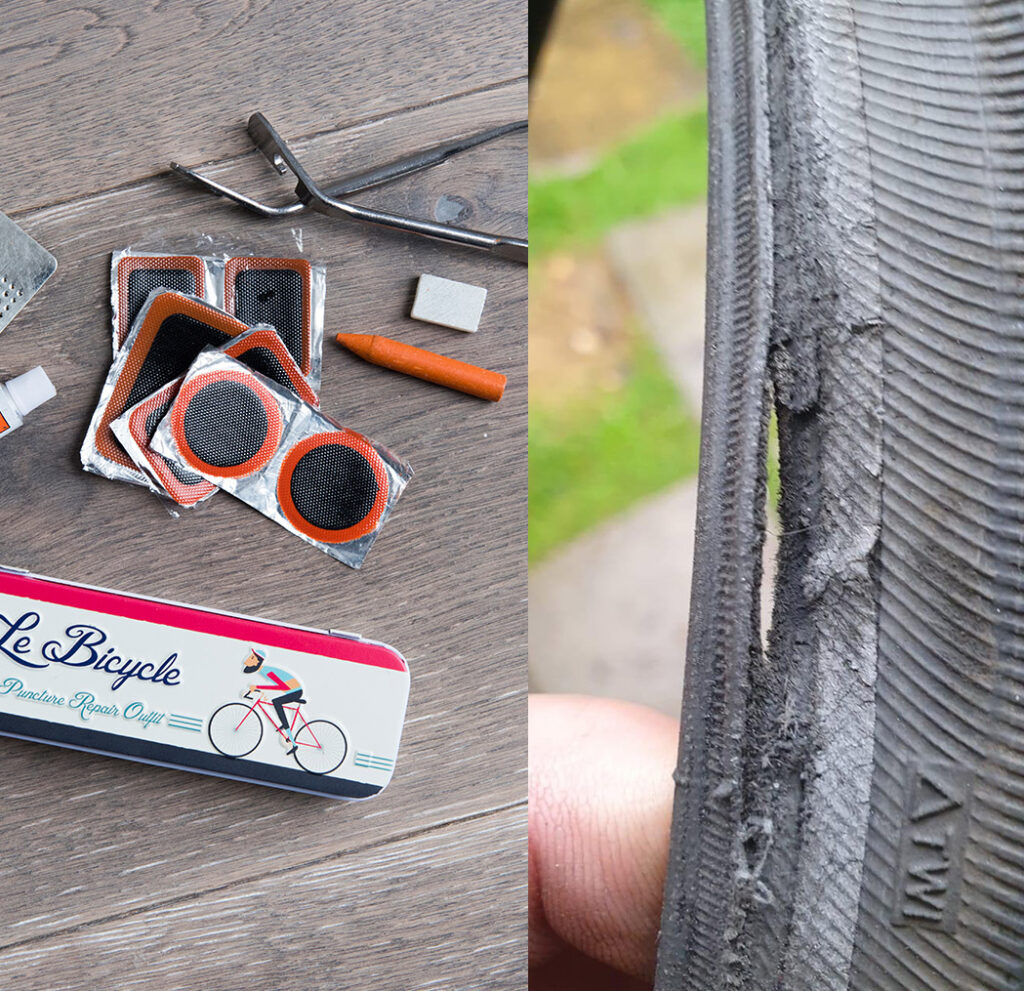
Consider a snack / food or coffee break
Many Cyclists opt to pack for a long ride some snacks such as protein or energy sachets, popular brands include energy isotonic gels by SIS (Science in Sports), honestly there are many brands out there, the least goes on and on.
I always opt for a nice coffee break with my cycling mates, normally at half-way point, accompanied by Nature Valley or Eat Natural bars. When we're out in the countryside I'll even brew some coffee on my Campingaz, other solutions may include Odoland, Colman or the very posh (and expensive) Jetboil. Look them up - these are standard camping gear, not necessarily for cycling.
WACACO produces espresso shots (cold though) using Nespresso capsules and are easy to carry, but ultimately a coffee shop is just a good of an option 🙂
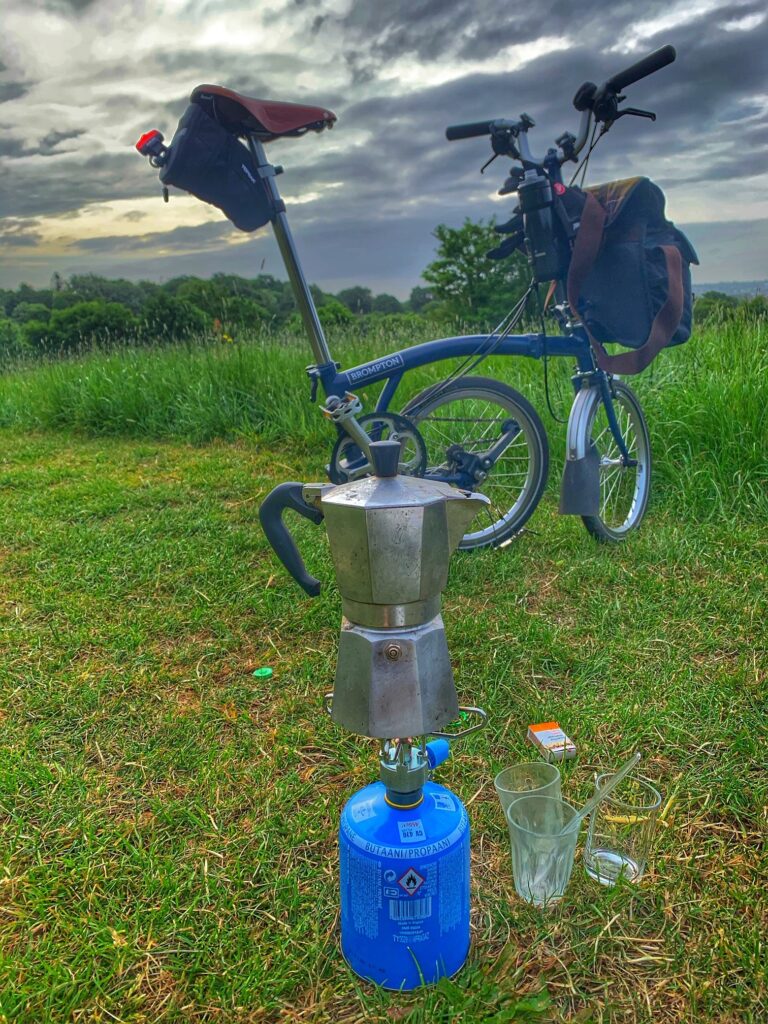
Choose your right bag, pack some tools
Finally, a very important piece of equipment to pack for a long ride, is of course - your bag. A rucksack may not benefit a long ride, putting extra strain on the riders' shoulders. It also might not be feasible if you're already equipped with an hydration backpack.
Other solutions may include saddle bags, or frame bags, which blend with the bike frame and don't ruin the rider's aerodynamics. Brompton and other folding bikes benefit from a carrier block which mount bags.
🎒 Rucksack choices - Ortlieb's Commuter Daypack Urban doesn't come cheap, but has a place to hang a U-lock, Rapha has similar features and is water-resistant. Dakine has some nifty solutions that can be integrated with the hydration pack.
🎒 Saddlebags - Topeak's Aero Wedge bags are perfectly shaped to fit the rear of your saddle, however they are realtively small, and won't carry more than necessary tools, an inner tube and a few other items, Ortlieb Rackless Seat-Pack and Apidura Expedition Saddle Back will carry up to 16-17 Ltr, but will put some weight on your frame.
🎒 Handlebar bags - Both mentioned above, Ortlieb & Apidura, have the best choices when it comes to handlebar bags. Generally, Apidura is a nice UK small business that does very nice solutions for bike bags, including very clever frame bag (the picture below is an Apidura fit bike). Check them out here.
Whatever bag you may choose, make sure it can fit a few necessary tools, such as an Allen key, which will allow you to carry on quick fixes along the road (for instance if your handlebar is not aligned or your seatpost moved). Topeak and Park Tool have very good "Swiss Army" like solutions which are small to pack and won't scratch/puncture other items (such as an inner tube). If you have room, a spanner which suits your bike parts size - is also quite handy.
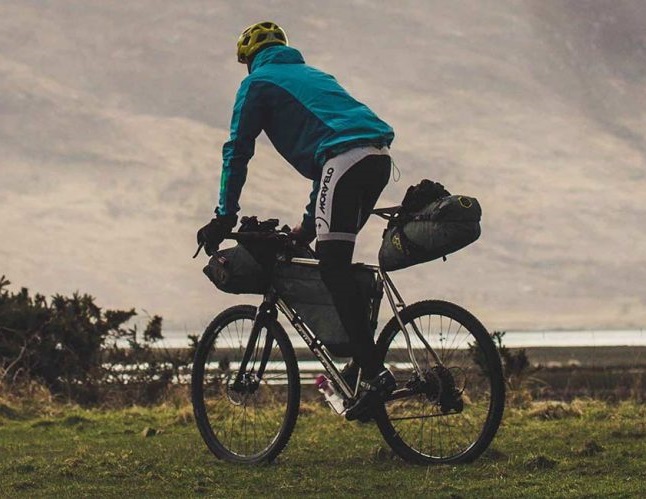

In conclusion, I've given some recommendations as to "what to pack for a long ride". Did I miss stuff? most likely. Is everything that suits me will suit you? not necessarily. The above is a partial list of things you may need, and I tried, without any affiliating links - to pinpoint some good brands and solutions out there. There are most likely great products out there which I've neglected to mention.
The main thing is to be prepared. When you pack for a long ride, especially when you feel less confident with your riding, make sure you have the necessities you need, make sure you take the elements under consideration, and yeah - wear sunscreen!


